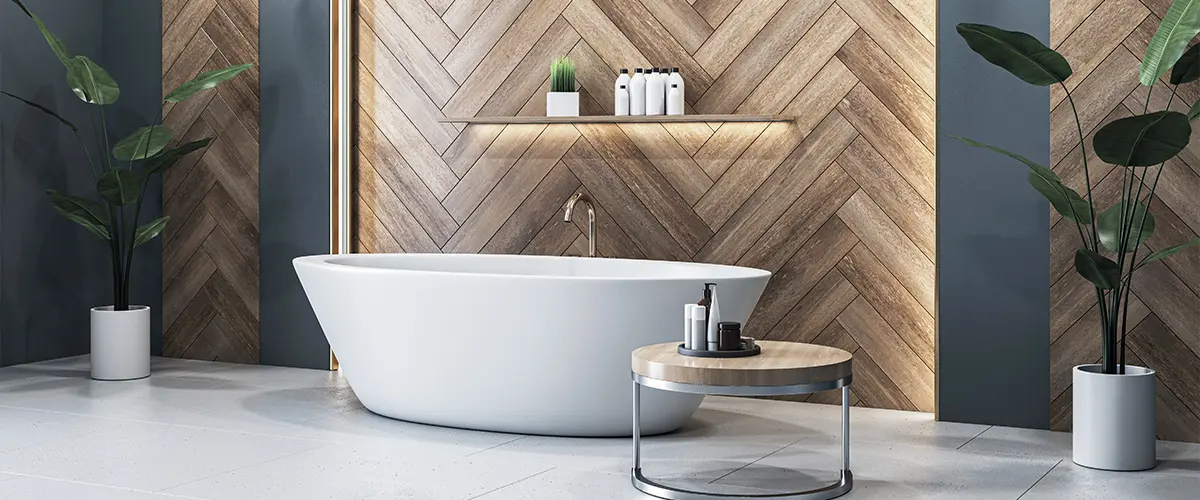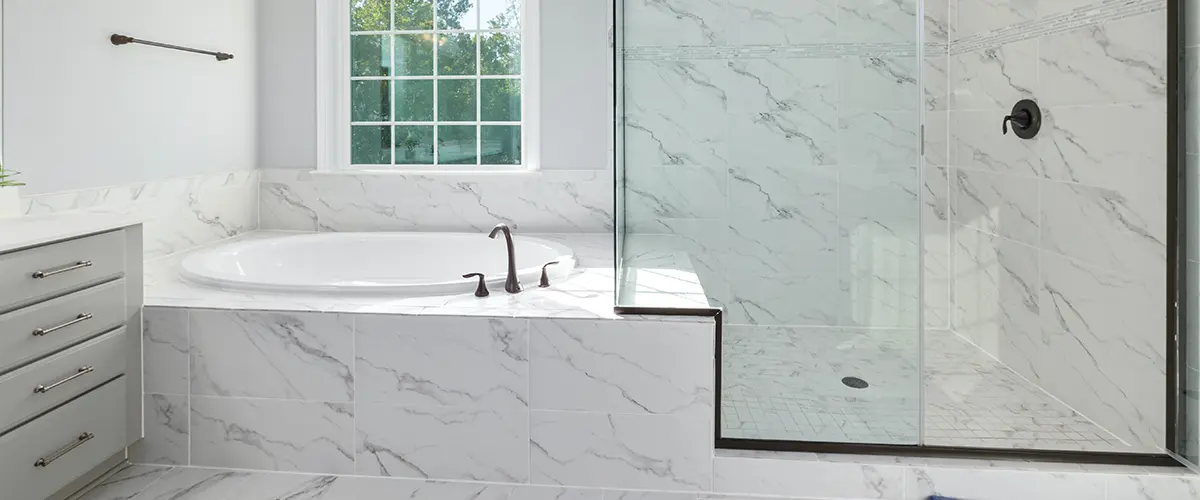Freestanding Bathtub VS Built-in Tub: A Comprehensive Guide
When it comes to designing the perfect bathroom, one of the standout features often becomes the centerpiece: the bathtub.
Whether you’re in the midst of a full renovation or simply updating a few key elements, the choice between a freestanding and a built-in bathtub can significantly influence the look and feel of your space.
This blog post will delve into the definitions, advantages, and disadvantages of both freestanding and built-in bathtubs, helping you make an informed decision that aligns with your lifestyle, preferences, and bathroom layout.

What are Freestanding and Built-In Bathtubs?
Freestanding Bathtubs are exactly as their name suggests: bathtubs that stand alone without being attached to or supported by any walls. They are often considered statement pieces and can be placed anywhere in the bathroom that plumbing allows.
Freestanding tubs come in a variety of designs, from classic claw-footed styles to modern, sculptural pieces.
Built-in bathtubs, on the other hand, are integrated into the bathroom design. They are installed against one or more walls, with the sides enclosed by a platform or casing. This category includes alcove tubs, drop-in tubs, and under-mount tubs.
Built-in tubs are known for their practicality and space-saving qualities.
Diving Deeper into Freestanding Tubs
Advantages
- Striking Visual Presence: Freestanding bathtubs serve as the jewel of the bathroom, offering an unrivaled luxurious and elegant look. Their standalone nature ensures they become an instant centerpiece, elevating the overall aesthetic of the space.
- Flexible Placement: Unlike their built-in counterparts, freestanding tubs are not confined by walls or specific placements. This freedom allows homeowners to position their tub in a way that best suits their design vision and bathroom layout, including dramatic placements like the center of the room or near a window with a view.
- Diverse Design Selection: The market for freestanding tubs is vast, featuring an array of styles from vintage claw-foot models to sleek, modern designs. This variety ensures there's a freestanding tub to match any bathroom décor and personal style, with choices in materials ranging from traditional porcelain to modern composites.
Disadvantages
- Space Considerations: The grandeur of freestanding tubs often requires a generous amount of space, not only for the tub itself but for the clearance around it. As such, they are better suited for larger bathrooms where space isn't a premium.
- Higher Cost: The price tag for freestanding tubs can be a significant investment. The cost of the tub, combined with potential plumbing modifications, given their flexible placement, can make them more expensive than other options.
- Storage Shortfalls: One of the trade-offs for the elegance of freestanding tubs is the lack of built-in storage. Without surrounding decks or casings, users must find alternative ways to store bath products and essentials, which can be a drawback for those who value convenience.
Check out Vintage Tub’s selection of the best freestanding bathtubs for remodeling inspiration!

Exploring Built-In Tubs
Advantages
- Maximizing Limited Spaces: For bathrooms where every inch counts, built-in tubs shine. Designed to snugly fit against walls and into corners, they make efficient use of available space, making them ideal for smaller or awkwardly shaped bathrooms.
- Practical Storage Solutions: The decks or casings around built-in tubs provide handy storage for toiletries, towels, and other essentials. This integrated storage helps keep the bathroom organized and ensures everything you need is within arm's reach.
- Budget-Friendly Option: Generally, built-in tubs come with a lower upfront cost compared to freestanding models. Their installation is often straightforward, without the need for extensive plumbing modifications, making them a cost-effective choice for many homeowners.
Disadvantages
- Design Constraints: The necessity to install built-in tubs against a wall can limit creative design and placement options. This inherent limitation might not appeal to those looking for a unique or unconventional bathroom layout.
- Subdued Aesthetic Impact: While practical and functional, built-in tubs often lack the striking visual impact that freestanding tubs have. They blend into the bathroom's overall design rather than standing out as a feature piece.
- Complex Repairs: Should any issues arise, accessing and repairing built-in tubs can be more complicated and invasive. Damage to the tub or its plumbing might require dismantling part of the bathroom structure, potentially leading to higher repair costs and more extensive renovation work.
Which Bathtub Style Offers the Most Comfort—Freestanding or Built-in?
When it comes to unwinding in a warm bath, both freestanding and built-in tubs can deliver a luxurious experience, each in their own way.
Freestanding tubs often evoke a spa-like ambiance. Many models, especially traditional clawfoot or oval designs, are deeper and longer, allowing full-body immersion and a sense of escape. Their sculptural presence also adds visual drama, making the bath feel like a centerpiece of relaxation.
Built-in tubs, however, shouldn’t be underestimated. Today’s designs offer generous depth and length, often with ergonomic contours and integrated features like armrests or lumbar support. They can be seamlessly enclosed with tile or decking, creating a cozy, insulated bathing zone that retains heat well.
Ultimately, the most relaxing choice depends on your space, style, and how you like to unwind. With the right design, either option can become your personal retreat.
Ready to Elevate Your Bathroom with the Perfect Tub?
Choosing the right bathtub is a crucial part of creating your dream bathroom. Whether you’re drawn to the elegance of a freestanding tub or the practicality of a built-in, GiGi Homes & Construction is here to guide you through every step of the process.
Our team of experts specializes in customized bathroom renovations that cater to your unique style and requirements.

FAQs on Freestanding Bathtub VS Built-in Tub
Bring Your Dream Bathroom to Life with GiGi Homes & Construction
With a keen eye for design and unmatched craftsmanship, we’re ready to transform your bathroom into a sanctuary of relaxation and style.
Don’t let the challenge of choosing between a freestanding or built-in tub hold you back. Let GiGi Homes & Construction turn your vision into reality with a seamless and personalized renovation experience.
Your perfect bathroom retreat awaits with GiGi Homes & Construction, where your vision meets our expertise.
Together, we’ll design a space that not only meets your functional needs but also serves as a personal oasis of comfort and style. Reach out now, and take the first step towards your dream bathroom renovation! (703) 675-7574
